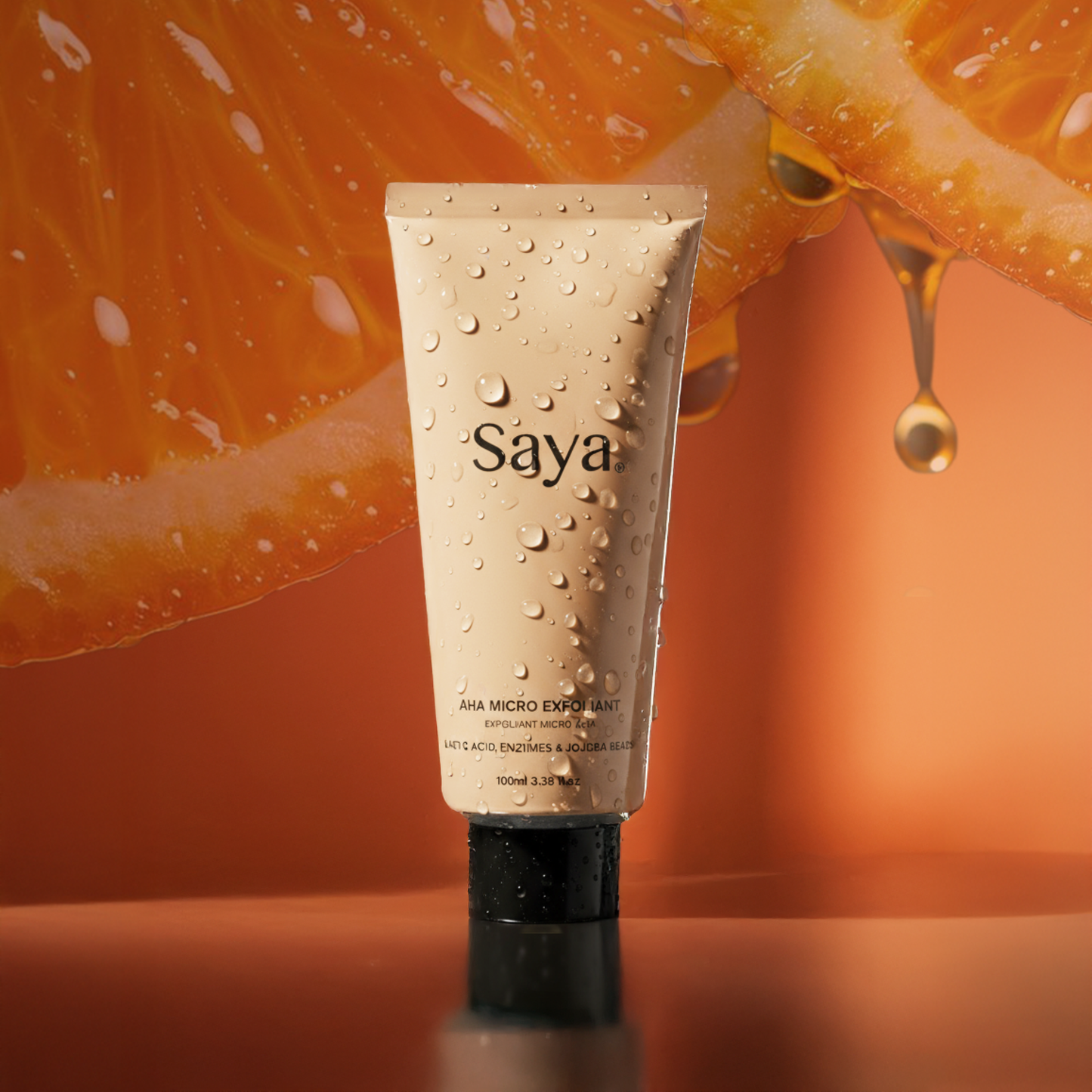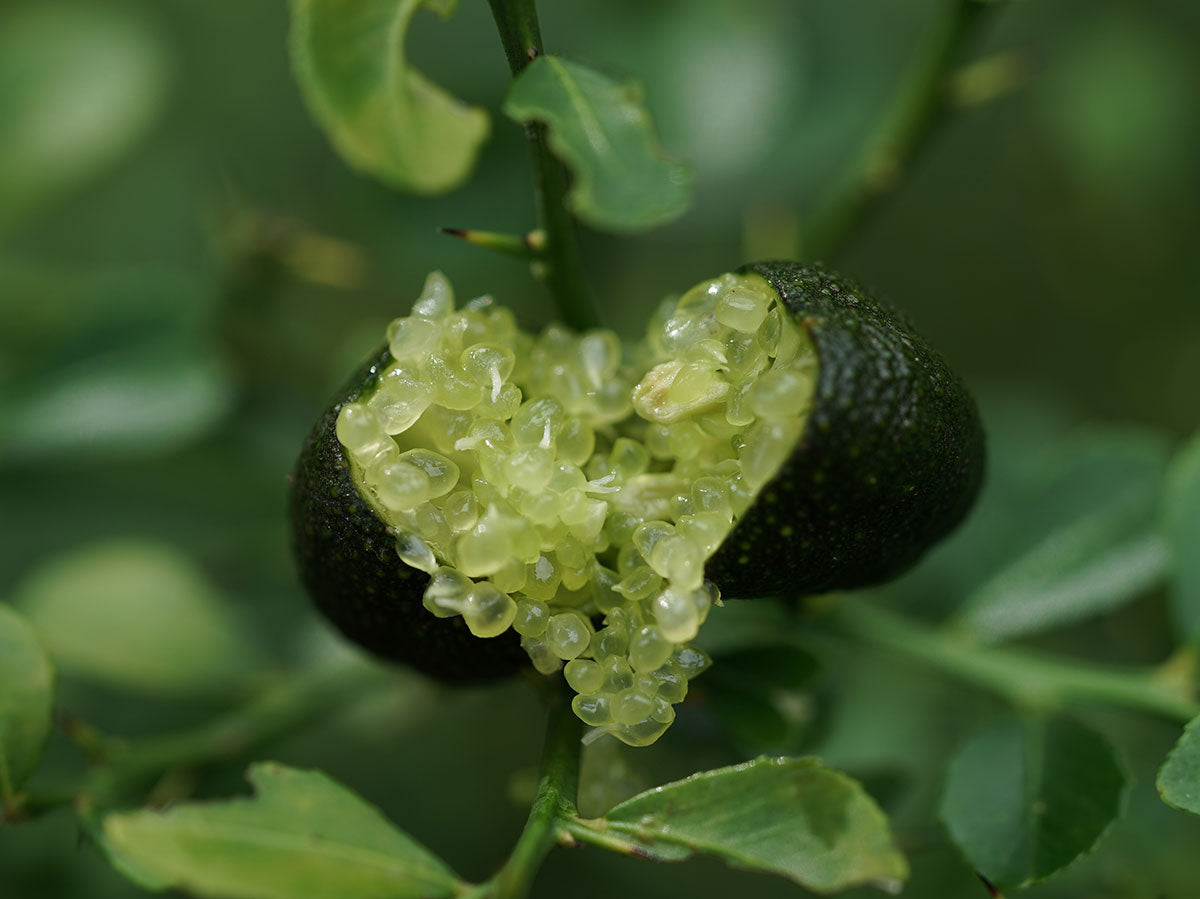
Your skin is constantly renewing itself. Every day, millions of old cells shed to make way for fresh ones in a process called desquamation (the normal, healthy shedding of the skin's outermost layer which is a vital process for skin barrier maintenance). But life has a way of slowing things down. Sun exposure, pollution, stress, ageing and even lack of sleep can all cause those dead cells to linger longer than they should.
When they build up, the result is skin that feels rough, looks dull, and becomes more prone to congestion. Even your most loved serums and creams will not sink in properly because there is a barrier in the way.
This is where exfoliation comes in. It is not about scrubbing your skin raw. It is about supporting what your skin is already trying to do, helping it shed the old, reveal the new, and function at its best.
Why Exfoliation Matters
Exfoliation is one of the most transformative steps in skincare because it impacts more than just glow. By lifting away the old, you are making space for healthier skin to thrive. It:
- Encourages healthy cell turnover, so skin stays fresh and balanced
- Clears pore build up to help prevent breakouts
- Smooths texture for a softer touch and a more even surface
- Enhances absorption, so every product that follows works harder
- Reveals radiance, that unmistakable post exfoliation glow
→ In short, exfoliation helps your skin work smarter, not harder.
Chemical Exfoliation: AHAs & BHAs
Chemical exfoliants work by dissolving the glue that holds dead skin cells together, allowing them to shed more easily. Picture a brick wall and imagine AHAs and BHAs gently loosening the mortar so the old bricks can finally fall away.
Alpha Hydroxy Acids (AHAs) are often derived from natural sources such as sugarcane, citrus fruits, and maple, each rich in their own unique acids like glycolic, citric, malic, tartaric, and lactic. When combined, these fruit-derived acids create a harmonious blend that offers multi-dimensional exfoliation, smoothing, brightening, and renewing the skin without compromising its comfort.
AHAs are water-soluble acids that work on the skin’s surface to gently dissolve dead cells, helping to reveal a smoother, more radiant complexion. They’re loved for their ability to refine texture, even tone, and restore luminosity but not all AHAs are created equal.
Glycolic acid, one of the most well-known, has a small molecular size, meaning it penetrates quickly and delivers fast results. However, this strength can sometimes lead to dryness or sensitivity. Lactic acid, by contrast, is larger in size and works more evenly across the skin. It provides the same brightening and refining benefits while also drawing in moisture to hydrate and support the skin barrier. It represents a gentler, more balanced approach to exfoliation, one that achieves results without irritation.
Beta Hydroxy Acids (BHAs) are oil soluble, so they move deeper into the pores, breaking down excess sebum and debris. Salicylic acid is the best known BHA, famous for reducing blackheads, breakouts, and congestion. It is a game changer for oily or acne prone skin, though not always necessary for drier or more balanced types.
→ Acids can sound intimidating, but really, they are just the editors of your skin, cutting what does not belong, polishing what is left, and leaving you with a smoother final draft.
Enzymatic Exfoliation: Nature’s Polish
Derived from fruits like papaya (papain), pineapple (bromelain), and mango, they digest the proteins that keep dead skin cells stuck to the surface. Instead of melting the glue, they eat away the excess, leaving skin instantly smoother and brighter.
What makes enzymes so special is how self regulating they are. They only act on what is ready to be removed, nothing more and nothing less. That means less risk of over exfoliation and irritation, and results you can see and feel right away. It is why enzymatic exfoliation is often recommended for sensitive skin, but also loved by those who just want an immediate polish without downtime.
→ This is why enzymatic exfoliation is so valuable. It is effective yet non irritating, and gives an immediate glow. If acids are the editors, enzymes are the gentle proofreaders.

Physical Exfoliation: The Feel Good Factor
For many, nothing feels quite as satisfying as a scrub you can feel working. Physical exfoliants rely on fine particles to buff away dead cells. But they come with a history worth unpacking.
In the early 2000s, scrubs with jagged nutshells or plastic microbeads were everywhere. They were effective at sloughing off cells, but the jagged edges caused micro tears in the skin, and the beads themselves ended up polluting waterways. Microbeads are now banned in many countries for this reason.
Modern physical exfoliants are more refined. Jojoba beads are a perfect example. Naturally spherical, they roll smoothly over skin without scratching, and they are biodegradable, so they are safe for the environment. They deliver that polished feeling in a way that is both sustainable and gentle.
For the body, physical exfoliants can be a joy to use, transforming dry or rough patches into soft, glowing skin. Our Coconut Body Polish is designed exactly for this, combining biodegradable exfoliants with nourishing botanicals. It softens while it smooths, leaving skin feeling as luxurious as it looks.
→ Physical exfoliation is like slipping into crisp linen sheets, instantly smoothing and refreshing.
How Often Should You Exfoliate?
The temptation is to think that more exfoliation means better skin. But overdoing it is one of the fastest ways to weaken your barrier. Redness, irritation, and tightness are all signs you have gone too far.
For most skin types, one to two times a week is the sweet spot. Evening is best, when the skin naturally enters repair mode. Always follow with moisturiser or oil to restore hydration, and always apply SPF the next morning. Freshly revealed skin is more vulnerable to UV damage.
→ Exfoliation is like perfume. A hint enhances, too much overwhelms.
Key Takeaways
- Gentle is powerful. The best exfoliants respect your barrier while still delivering results.
- Not all acids are equal. Glycolic works fast but can be harsh, lactic delivers the same results with added hydration.
- Enzymes are underrated. Papaya, pineapple, and mango dissolve dullness instantly with minimal irritation.
- Scrubs need scrutiny. Say no to harsh shells or microbeads, yes to biodegradable, skin kind jojoba beads.
-
Less is more. One to two times a week is enough, exfoliation should be a ritual, not a daily chore.

A Founder’s Perspective
“When I was struggling with my own skin, I realised how powerful regular exfoliation could be. It is not just about removing dead skin cells, it is about strengthening the skin, improving texture, and helping every other product in your routine work harder. Early on, I made it a priority to really understand the different types of exfoliating ingredients and how they perform on the skin.”
— Saya McDermott, Founder
Exfoliation, Evolved
Exfoliation has moved beyond the days of harsh scrubs and one size fits all acids. Today, the future lies in thoughtful formulas that combine science with nature, effective yet gentle, innovative yet respectful of your skin’s barrier.
We have been quietly working on something that reflects this shift. A way to refine, reset, and renew your skin without compromise.
Consider this your official teaser: exfoliation, reimagined.



